In a piece I wrote for Discourse Magazine about the evolution of outlet shopping, I mentioned, as a counterexample to one of the trends I identified, a not-quite-outlet-center in Bucks County, Pennsylvania called Peddler’s Village.
I noted how a lot of early, relatively small, quaint outlet centers were closing, while a “current generation” of the outlet mall was growing: really big, higher end centers with more amenities but less charm. Here, in Flemington, New Jersey, is (or was) one of the old quaint outlet malls—in fact, the first one ever opened in the United States. And here’s one of the new ones, outside Leesburg, Virginia.
Peddler’s Village is, in its form and layout, a lot like an early outlet center: old-fashioned looking buildings, winding brick paths, no anchor stores or overly large retail spaces. It’s cozy and quaint, and feels more like an actual village with nothing but retail than, you know, a mall.
It was opened in 1962—predating outlet malls by about two decades. This and other similar outdoor shopping-center-type places probably influenced early outlet malls. Here are some photos on their official website. The site was a chicken farm with a tavern, and some of the old architecture was partially salvaged when building the new “village.” In fact, there isn’t much to Lahaska, the little town the center is located in, except for Peddler’s Village.
There used to be an outlet mall across the street. But that is basically abandoned now. This is quite a visual; the empty area south of the highway is the old outlet mall.
During our Christmas visit to New Jersey, we all went to Peddler’s Village for a little shopping and walking (on our way to do some antipasto shopping at Altomonte’s, an Italian deli in Doylestown, and Bethlehem, for a Christmastime walk in the “Christmas city.”)
Now I said Peddler’s Village isn’t quite an outlet mall. It isn’t really an outlet mall at all; the stores are mostly of the specialty foods/homemade decorative artwork/bespoke home furnishings variety, along with some restaurants and a couple of tasting rooms, which is a cool addition that rounds the place out. There’s also a food store with some oils, vinegars, honeys, mustards, and spreads that offers samples of basically everything.
There’s the Cock ’n Bull, a classic American restaurant that has seasonal historical reenactments, and an occasional buffet dinner called King Henry’s Feast. And there’s the Golden Plough Inn, a nice-looking hotel on site. It’s very old-fashioned, in a kind of “simpler times” way.
What interests me is why Peddler’s Village survives, even as seemingly similar shopping centers decay and disappear. I suspect this is part of it; it isn’t just shopping, nor is it the sort of shopping that can be easily replaced by e-commerce or a big-box store. It’s a place you can go for half a day, or just an hour or two. But it’s also enough for a weekend, especially, I imagine, if you have kids and are doing a couple of other things in the area. Doylestown, one of those nice Pennsylvania small cities with a walkable downtown and shopping and restaurants, is very close. The Peddler’s Village hotel probably captures and “borrows” some Doylestown traffic.
The stores are cool, and all the buildings are unique and homey. There are lots of stairs, small rooms, nooks and crannies. You kind of feel like you’re exploring. It’s a qualitatively different experience than a box store with uniform shelves.
Yes, the prices are pretty high for most of the stuff in most of the stores. But when you’re feeling good—when the place is well managed and nicely kept, the people are nice, etc.—it’s a lot easier to talk yourself into buying something.
Of course, you can keep asking “why?” Why is it nicely kept, etc. But you can also overthink this stuff. A real life place that looks kind of like a Christmas village, with restaurants and a hotel and a place to get coffee or a drink, and shop, and take in rural surroundings just outside a small city? I mean, yeah, of course that’s appealing. How many shopping centers can you think of that check all these boxes?
In Flemington—home of that first-ever outlet mall—there was also a “faux-village made of historic and historic-looking buildings” shopping center. That, however, has deteriorated and is basically abandoned. There was also, by Pennington, New Jersey, a sort of similar shopping center, complete with a motel and bar and grill and petting zoo, that emptied out and was demolished in the last decade.
So this isn’t a bulletproof retail format. And there may not be enough data points to truly explain why some make it and some don’t. But this one sure did, and it doesn’t seem hard to tell why.
Related Reading:
Kinney Shoes’ Architectural Afterlife
Thank you for reading! Please consider upgrading to a paid subscription to help support this newsletter. You’ll get a weekly subscribers-only piece, plus full access to the archive: over 1,200 pieces and growing. And you’ll help ensure more like this!





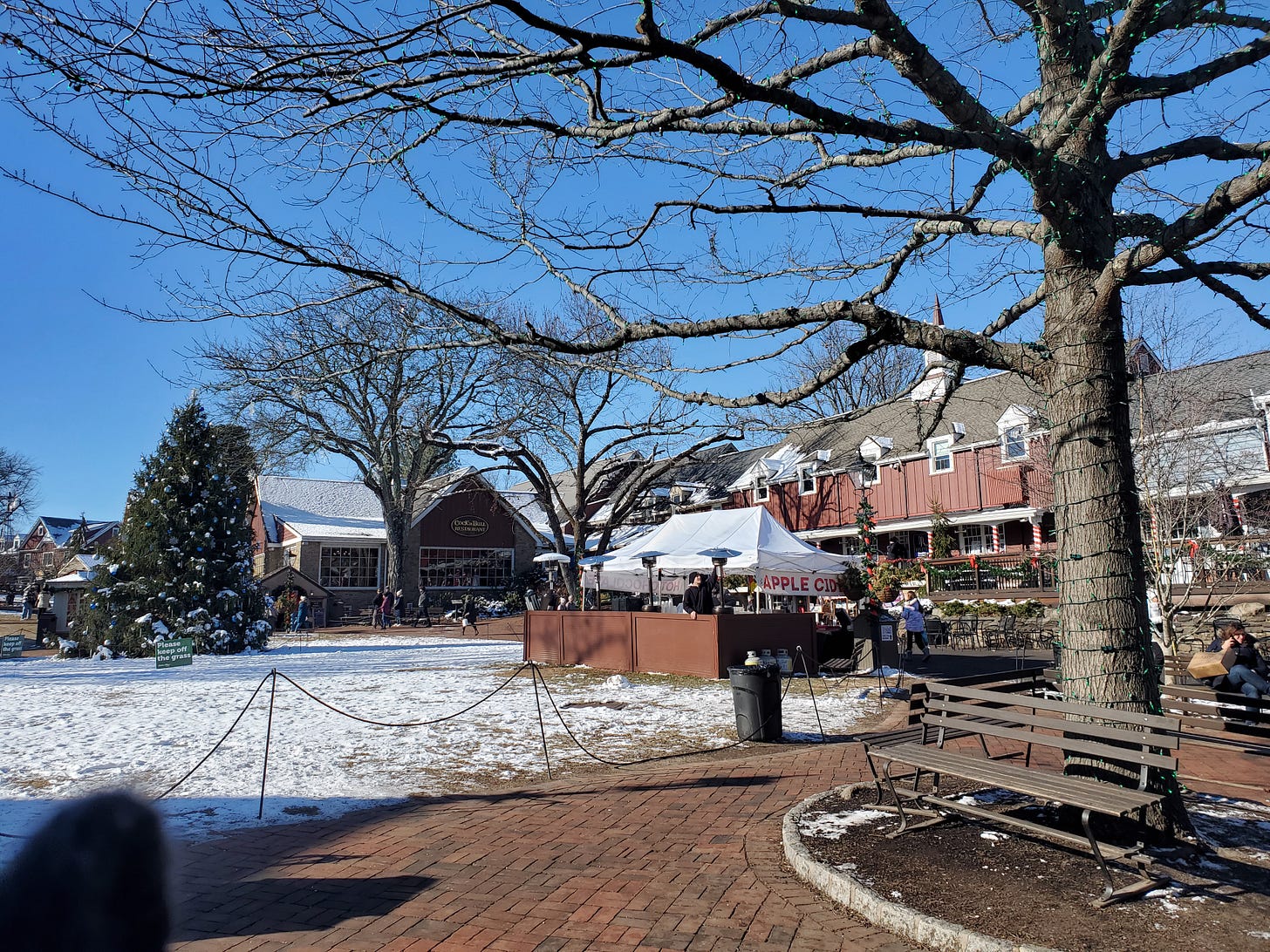
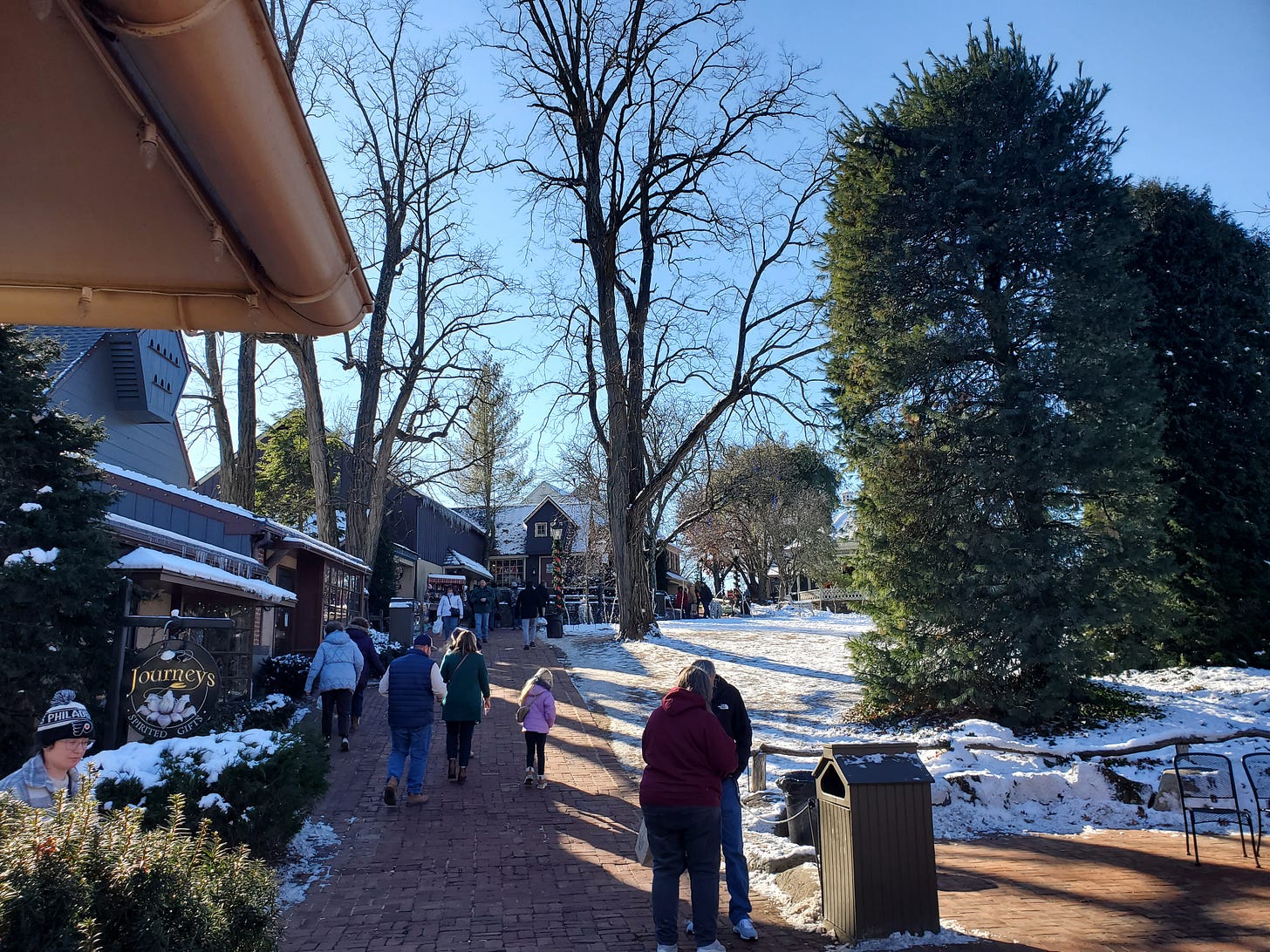
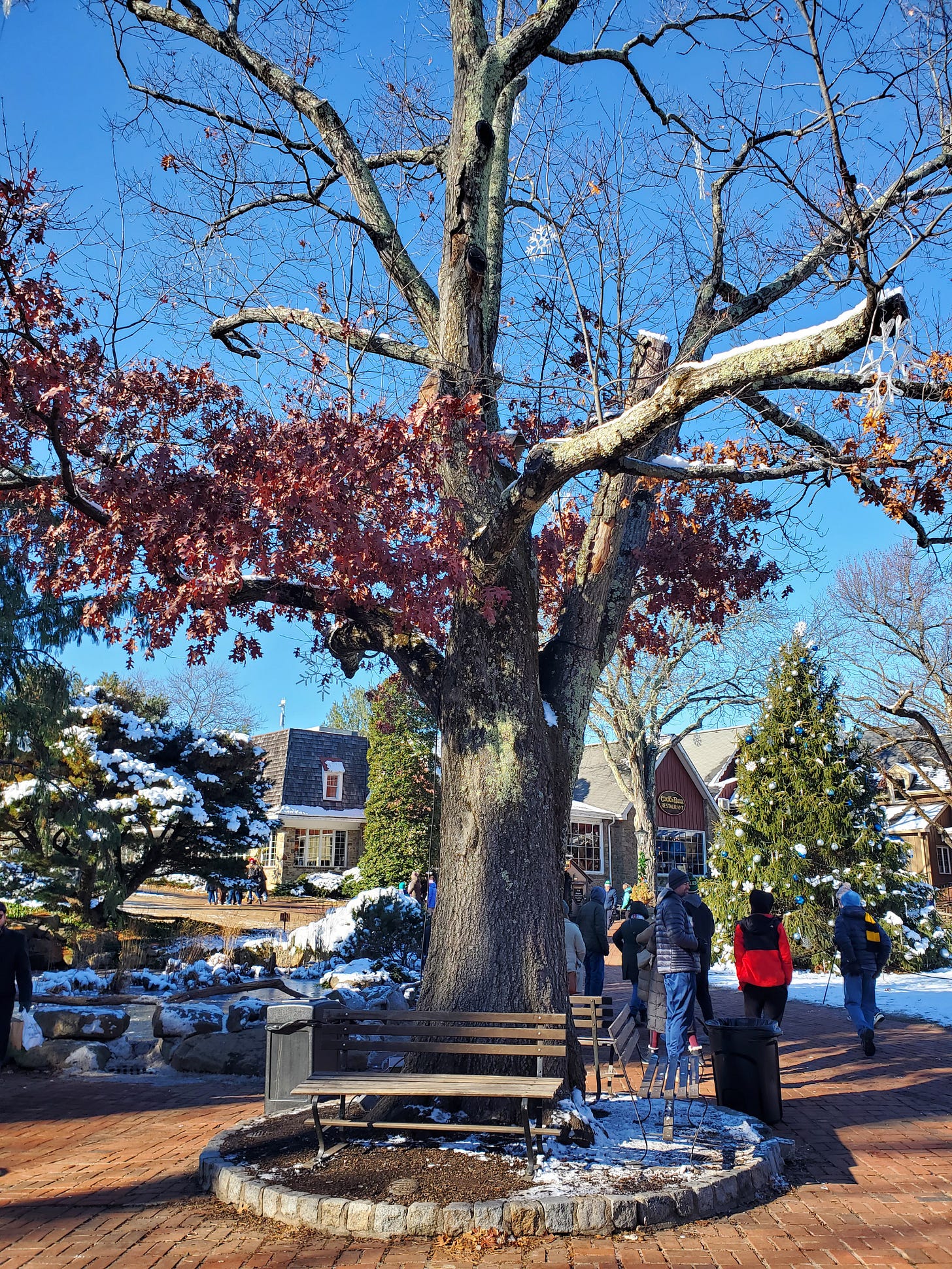

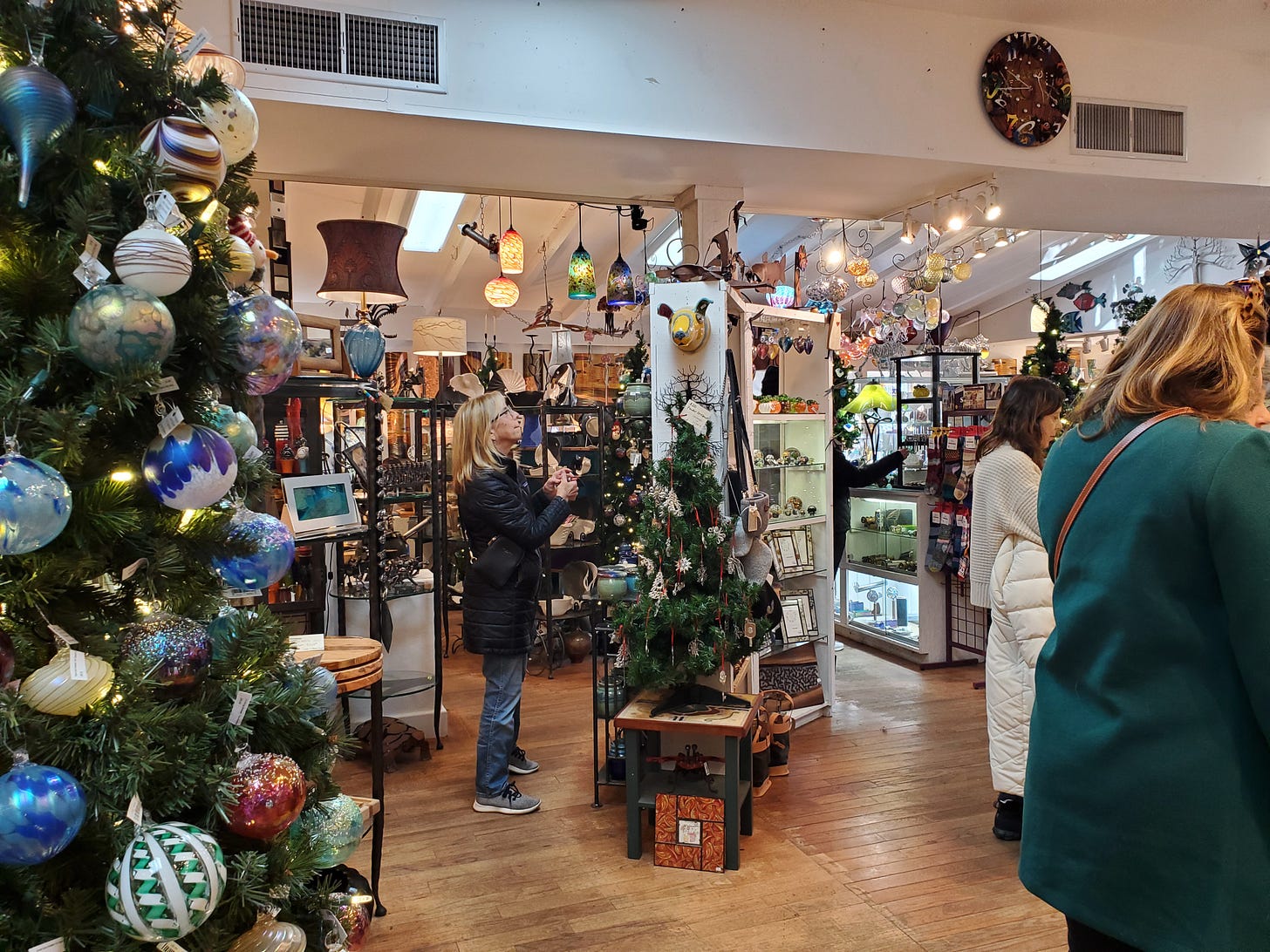
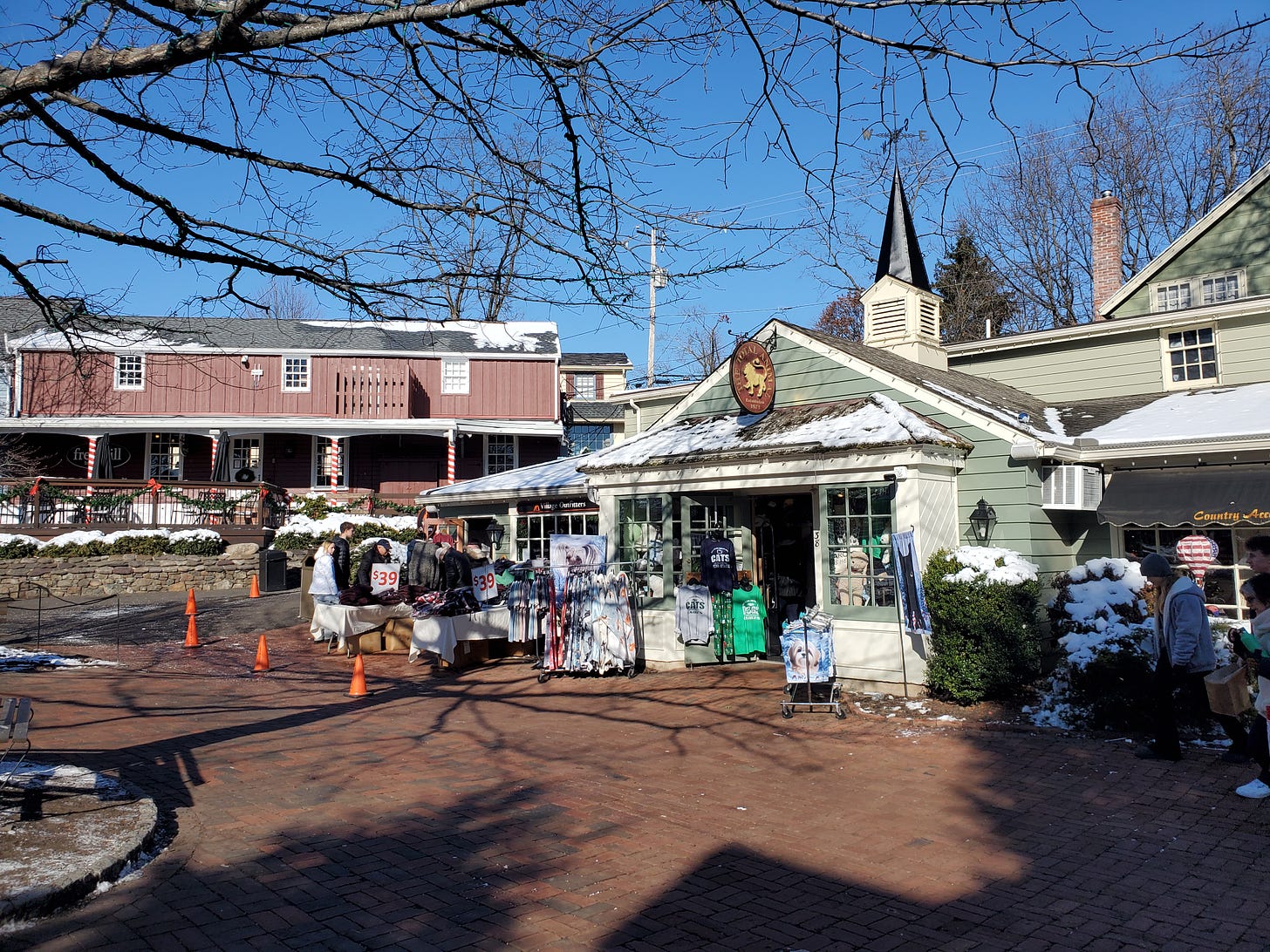
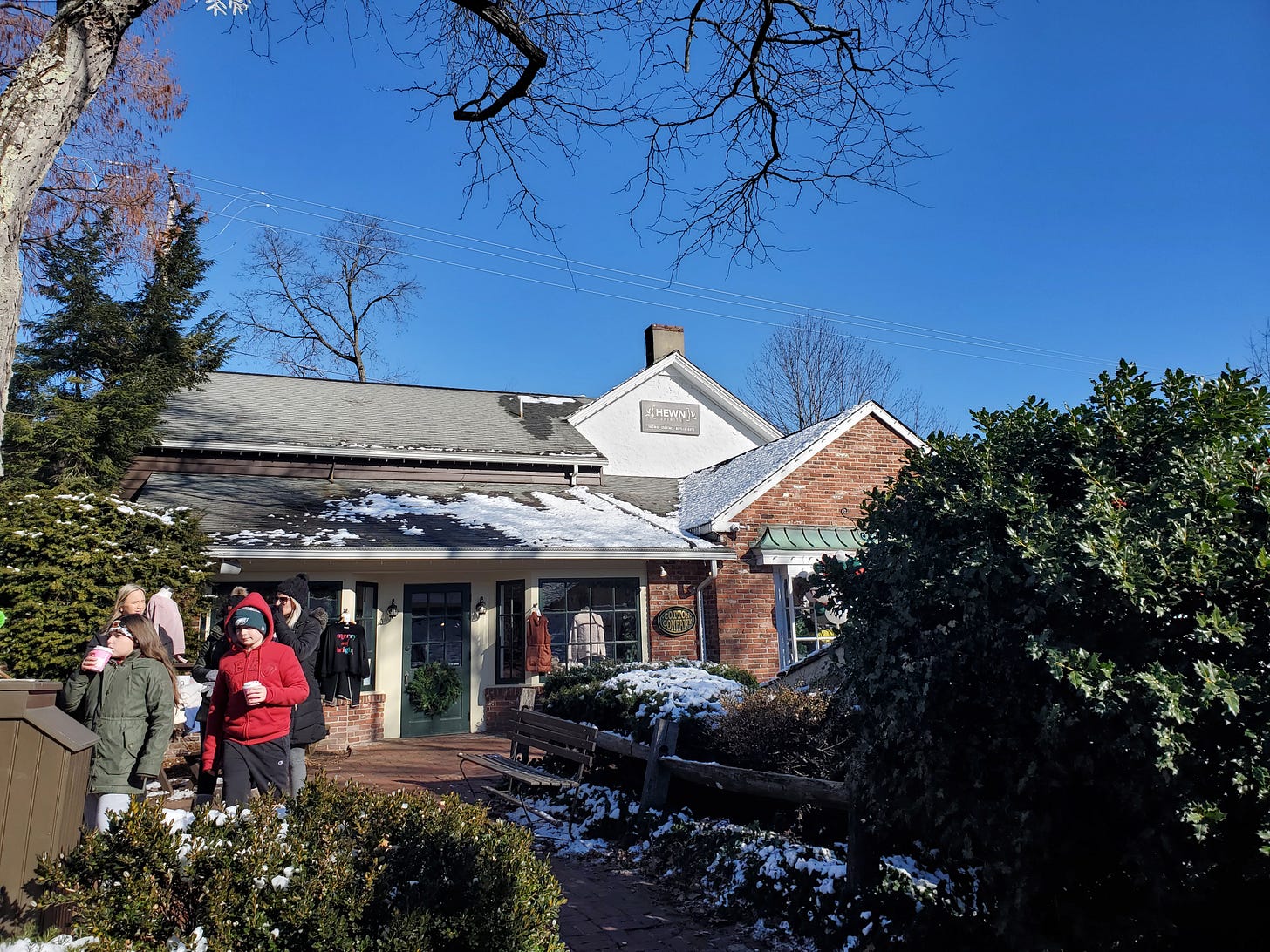
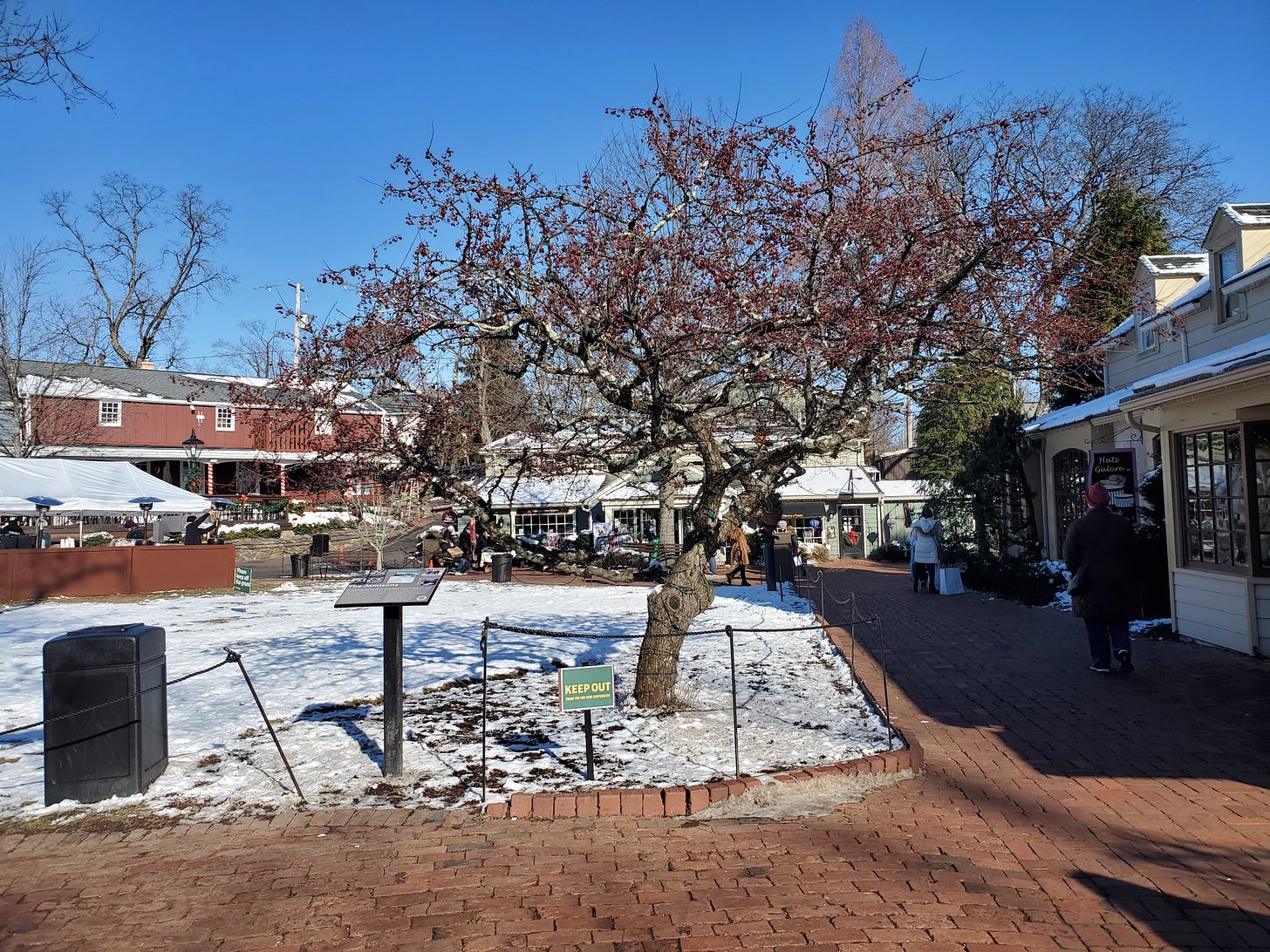
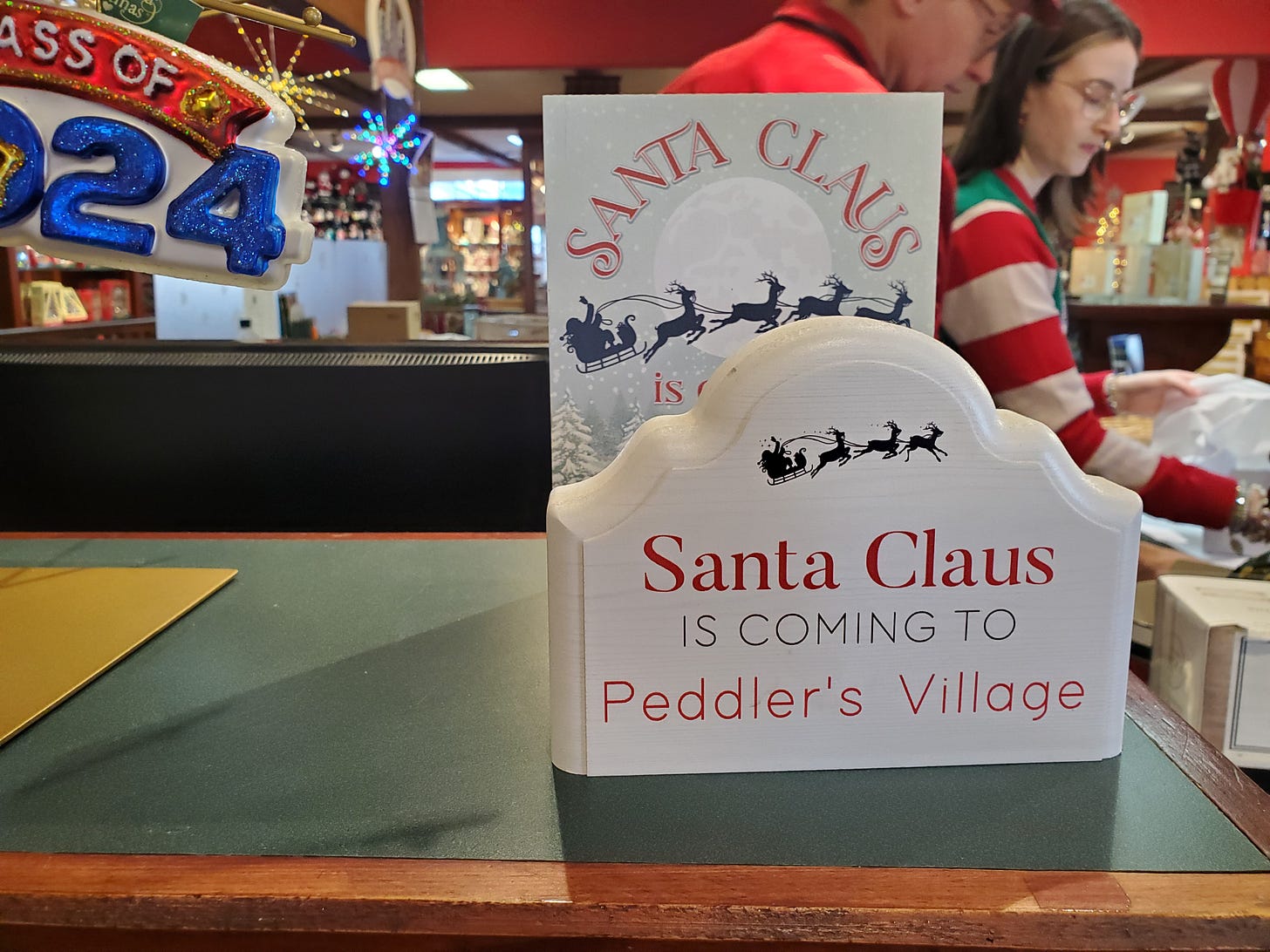
Survival boosted in large part by close proximity to New Hope/Lambertville, which drives a lot of traveler/consumer traffic to area, particularly of affluent demo. Flemington never had a similar magnet.
A lot of museums have historical villages where they sell a few museum-related souvenirs. Ford's Greenfield Village is the best known. Maybe they're missing a bet by not opening the village to regular stores.